India’s timeless clay pottery craft is seeing a surprise encouragement from food delivery kitchens that want to serve in handi and kulhad. Sunday mid-day goes behind the potter’s wheel
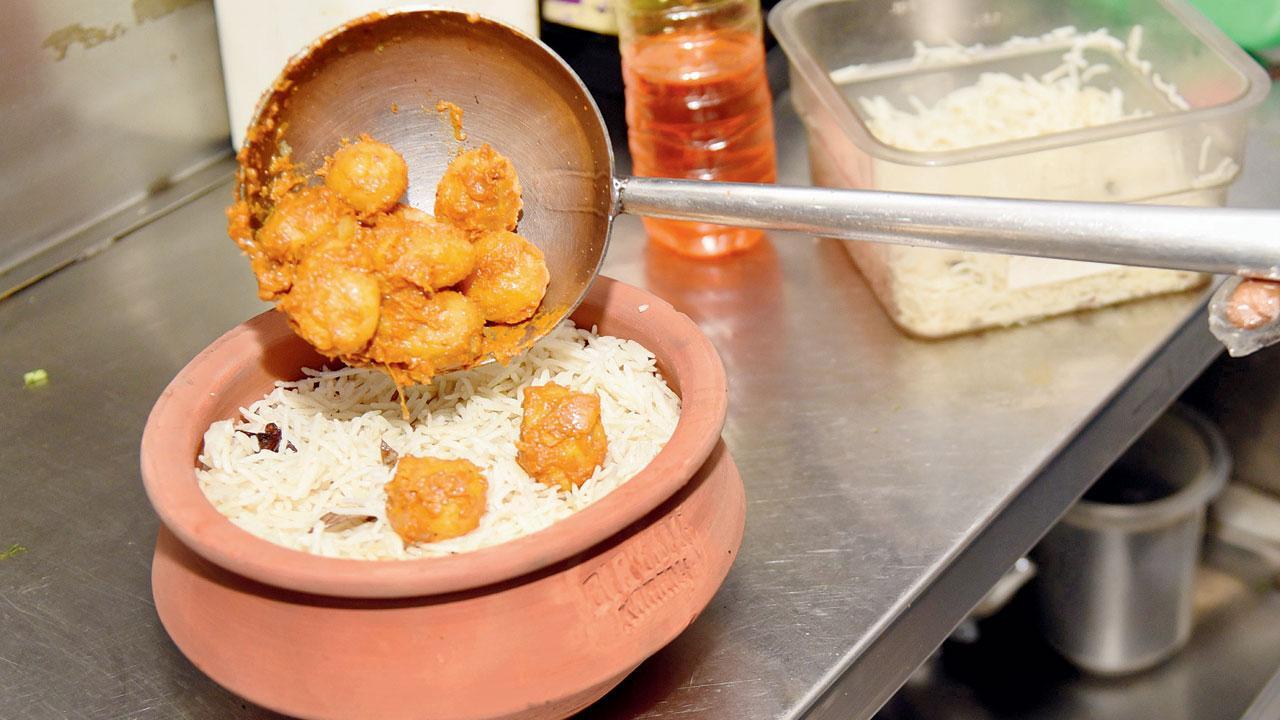
At their kitchen in Ghatkopar, The Biryani Kahani staff packs dum biryani in branded earthen handis that are delivered to clients with an aanch to reheat the dish at home minus the use of microwave. Pics/Sameer Markande
In August 2020, right in the middle of the COVID-19 pandemic, Ghatkopar entrepreneur couple Charmi and Bhavin Shah launched a delivery service called The Biryani Kahani. They wished to rewrite the narrative around one of the most ordered rice dishes in India, the ‘veg’ biryani. Among other aspects that they decided to make signatures of the brand, was the clay pot that they would cook and deliver the biryani in. “Clay pots are a great way to go back to the traditional Indian method of slow cooking to enhance the flavours of the biryani. Since clay absorbs excess water while cooking, it results in fluffy rice grains with a deep, earthy flavour. The fact that the handis are microwave-friendly means that nutrients remain intact during re-heating, and the pots can be reused for cooking or upcycling. This made our decision easier,” Charmi tells mid-day.
ADVERTISEMENT

The Shahs source the pots from Kumbharwada, Dharavi’s potter colony, which by some estimates is a hundred-year-old settlement located at the confluence of 90 Feet Road and 60 Feet Road established by the potter migrants from Saurashtra. Kumbharwada houses nearly 500 potter families who earn their livelihood making clay wear, selling them in local markets, to shops, while a lucky few have managed to find a way to sell to clients in the US, Germany and Japan.
The colony is split into four wadis or segments, each producing a distinct range of products—matkas, planters, diyas, artefacts, etc. As you walk through the astonishingly narrow alleyways that run between tenements, you notice the one-room homes where they live and work. Rows of diyas and phirni plates are left out in the sun to dry. When you approach a traditional kiln lined by coconut husk, the air around hangs heavy with toxic gases and ash. At 1 pm on the day we visited the colony, we noticed a group of kids in neat uniforms, returning from school, hopping with careless joy through this labyrinth—it gave us hope that Kumbharwada will see better days.
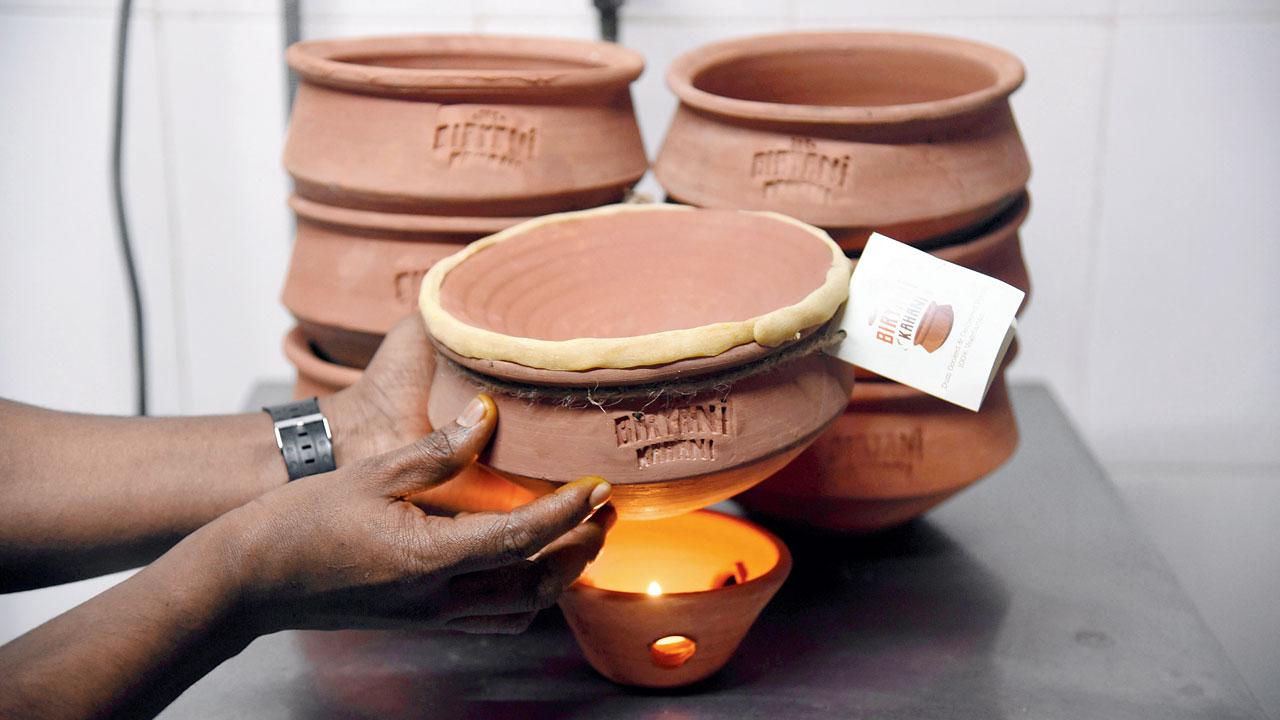
During the lockdown, the potters, like so many other craftspeople, had no source of income. They sat idle and were game to even take on small orders. “An interesting thing we noticed back then was that because raw material was scarce due to the snapping of intercity transportation, production had stalled. But the community at Dharavi is huge and well-connected, so whoever had reserved stock was happy to help the other,” Bhavin remembers. The couple says they feel lucky to have seen first-hand the magical skills of the potters, their capacity for hard work, and honesty. “All our handis, angithis, platters and kulhads are customised for specific size and design with our brand logo engraved,” says Charmi.
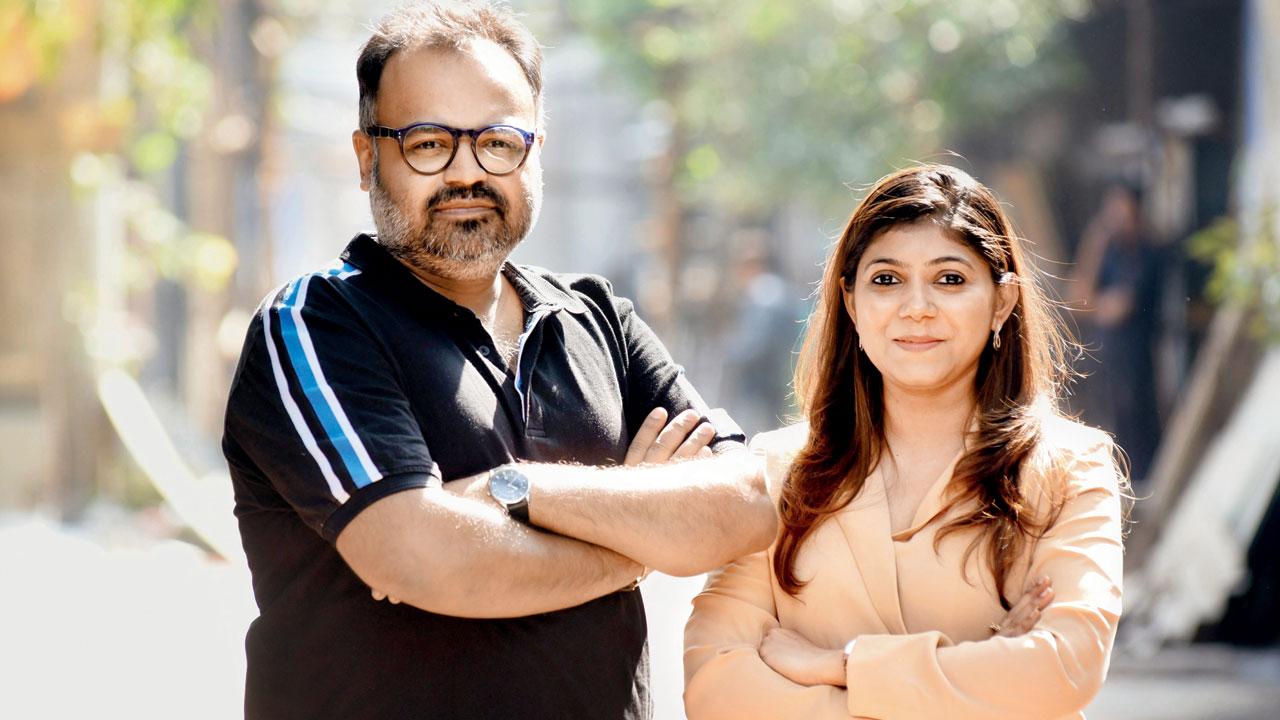
Charmi and Bhavin Shah of The Biryani Kahani support 500 potter families of Dharavi
Santa Cruz-based Jaspal di Bhatti sources its matkas that hold the kheer and aate ka halwa (150 ml) and biryani pots from Sai Shree potteries in Dharavi. Founder Preeti Sangtani estimates that the monthly order totals about 500 pieces. “They’ve been operating there for generations and customise the containers to match our requirements. It’s only been a pleasant experience working with them, even during the lockdown.”

Sanjay Vazirani
Art of Dum launched in Dubai, Mumbai, Bengaluru and Hyderabad in 2021 to focus, as the name suggests, on the culinary technique of dum or cooking on low flame in sealed containers. Of their choice of utensil, Sanjay Vazirani, CEO, FoodLink, says, “Back in the day, earthenware was a constant in Indian kitchens for everything from storing water to cooking. Clay pots allow food to be easily cooked over a fire, which reduces bacteria and releases nutrients like calcium, phosphorus, iron, magnesium, and sulphur. Because clay is porous, it retains moisture in the dish and allows it to circulate in the vessel while cooking, retaining the aroma of the food.” Because earthen pots retain the oil and moisture of ingredients, you don’t need to add additional fat.

Vishal Jindal
The brand sources its clay handis and martabaans from Khurja in Uttar Pradesh, the ceramic city of India with a legacy spanning over 400 years. “They use 100 per cent natural clay with no additives. The surface smoothness of the pots and the aroma of food cooked in these when we use the dum technique
is unmatched.”
But, Vazirani admits that working with artisans isn’t free of challenges. He explains that especially during the pandemic when sourcing of materials and vessels was tough and expensive, it was difficult for a brand like theirs to continue to support an SME sector like clay pottery. “The SME sector is struggling because of the limitation of capital investment. Things still run on jugaad. These sectors must start using technology and automation to bring in efficiency and build a larger production capacity. The government is doing its bit but it’s not enough. Brands like ours need to come forward and support such sectors,” he thinks. The potters at Khurja are now operating on a commercial scale, using electric bhattis or kilns and electric potter wheels. They are receiving training for regular upgradation and upskilling. What artisans need is consistent business, he says, and if a brand like Art of Dum is able to generate regular employment and consistent earnings, craftspeople can continue to further their ancestral legacy.
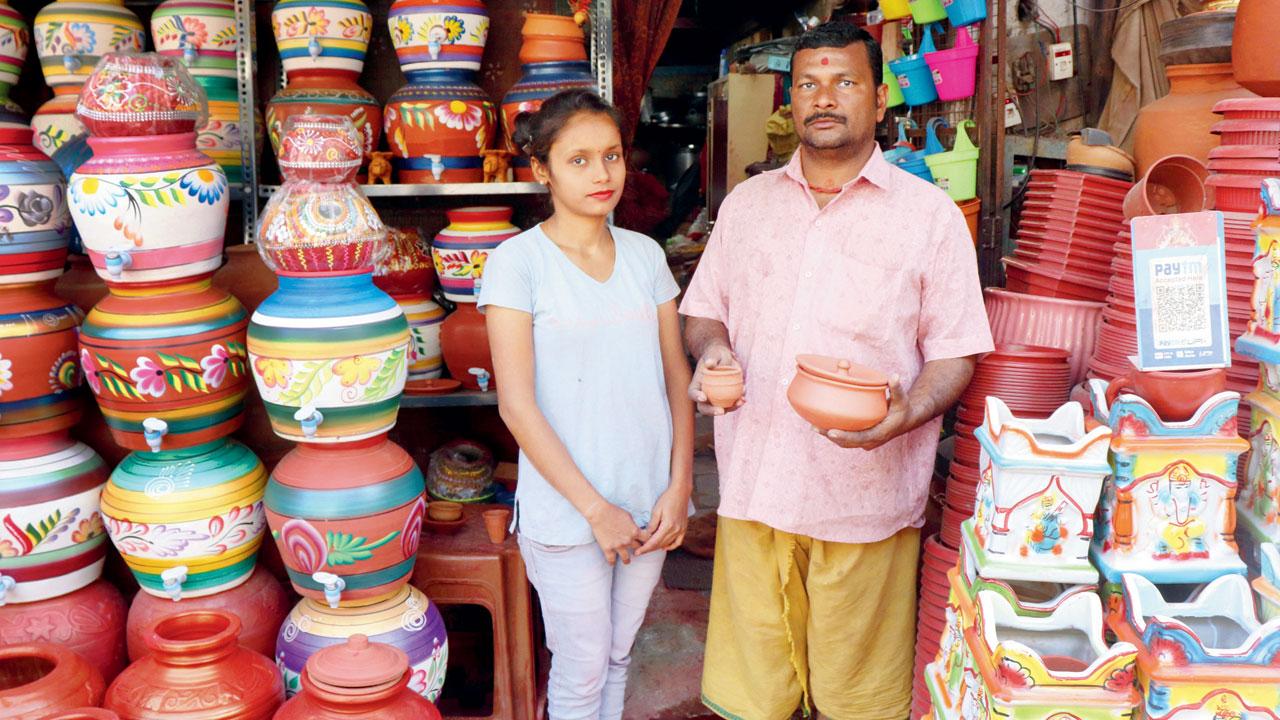 Rajkumar Gupta and his daughter at their Andheri shop where they sell clay vessels crafted at their Virar workshop. Pic/Anurag Ahire
Rajkumar Gupta and his daughter at their Andheri shop where they sell clay vessels crafted at their Virar workshop. Pic/Anurag Ahire
Vishal Jindal is founder and co-CEO of the Delhi-headquartered biryani delivery kitchen, Biryani By Kilo. Claiming to offer pakki and kacchi biryani to be delivered anywhere in 30 minutes, it pioneered the trend of cloud kitchens serving biryani in trademarked clay pots in 2015. Clay pots, says Jindal, were important to prepare the dum-cooked and layered. “It also resonates with the brand’s ethos of eco-friendly packaging and helps us do out bit to develop the rural economy. Food is made fresh on order at outlets and served to the customer in the same handi in which it was dum-cooked. The biryani once home, can be re-heated, for which we provide an aanch to our customers with a tea light. You can wash and reuse the handis. Some consumers re-use the handis to make DIY art or use them as planters.”
With operations spread across 45 cities and 99 kitchens, it currently orders five lakh clay handis a month, and provides livelihood to more than 1,000 artisans who live and work on the outskirts of Delhi.
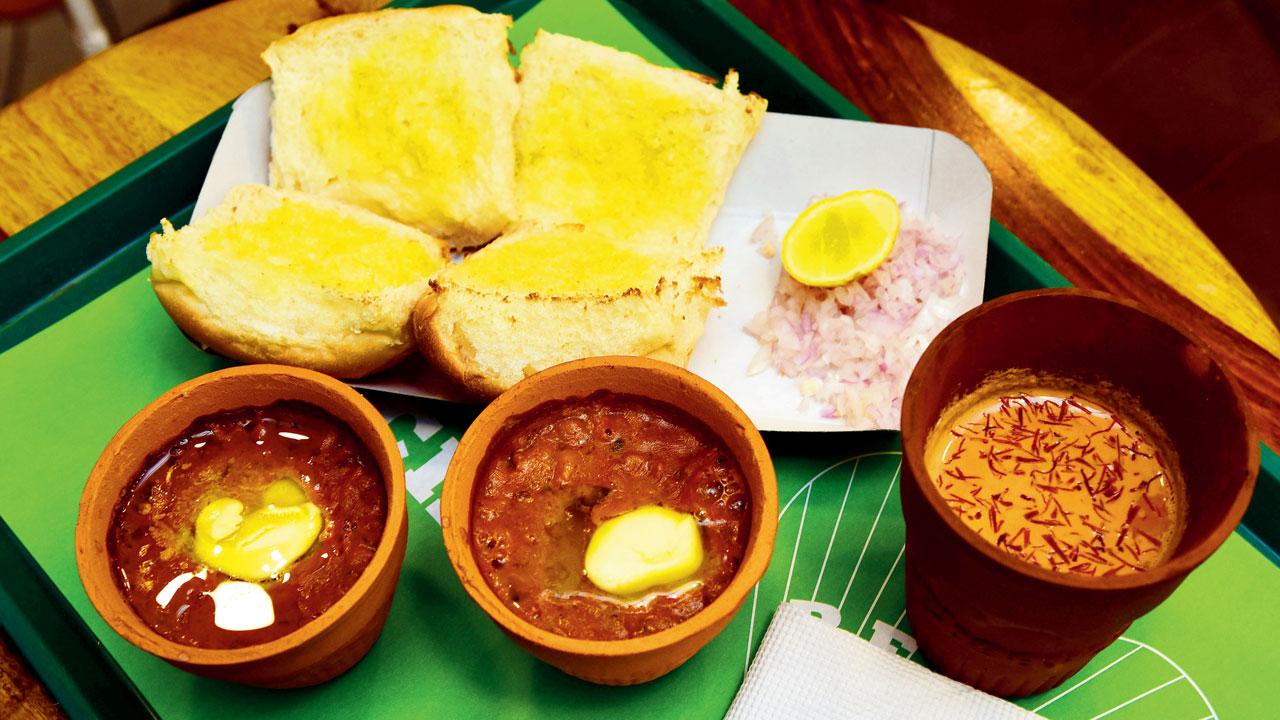
Chai and snacks chain Chaayos founded by two IITians serves teas in kulhad, and snacks in small clay vessels. Pics/Nimesh Dave
Sipping tea from a kulhad or clay glass is an old-school concept that’s found favour over the last few years. IITians Raghav Verma and Nitin Saluja launched Chaayos in 2012 to bring the Indian home-style chai to the modern and cafe setting. “We are about celebrating all things Indian and what better than to replicate the centuries-old method of serving tea in the kulhad? In my hometown Lucknow, tea is served in small kulhads but we decided to keep ours to a 200ml serving and the response was so overwhelming that we decided to serve pav bhaji and mutter kulcha in clay vessels too.
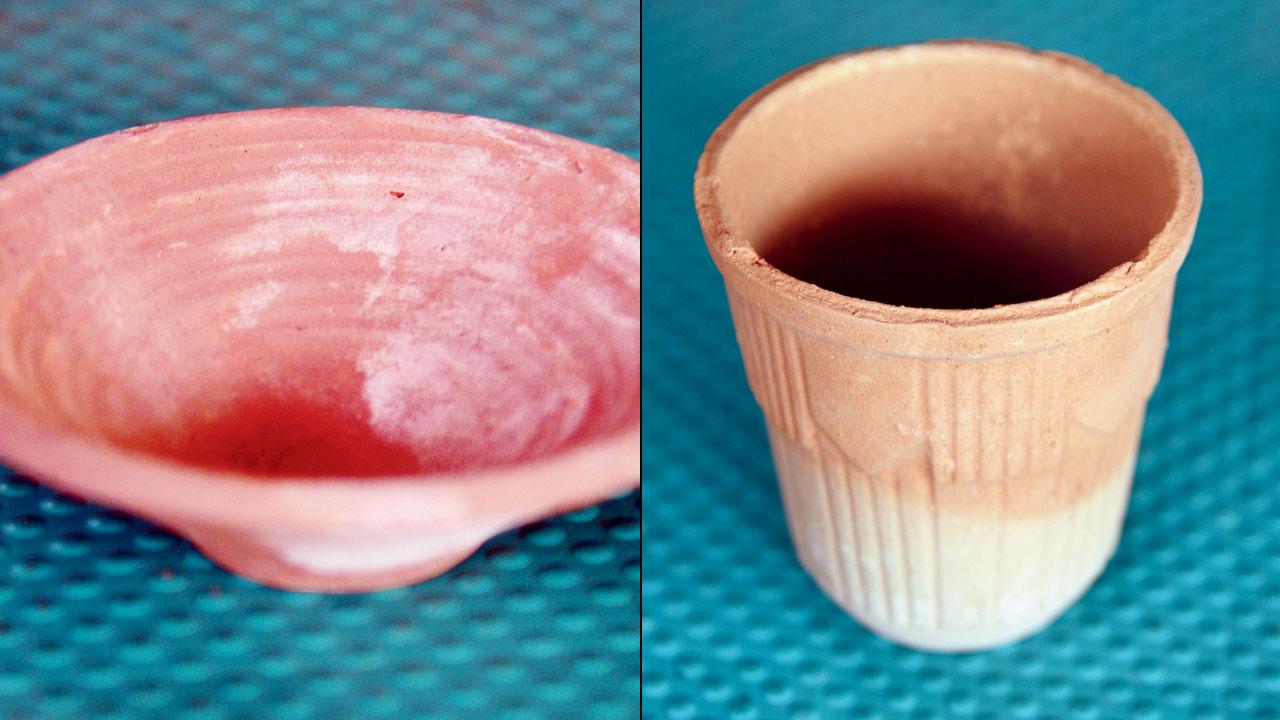
Phirni pyali and Chai Kulhad
It [use of clay] affects the taste and quality of the product. The idea was to go eco-friendly and boost the pottery industry,” says Saluja adding that Chaayos sources clay vessels from three pockets across Mumbai and MMR. He adds, “Some time back, an NGO from New Delhi got in touch with us to take our used kulhads, wash them and upcycle them with art work. These were gifted to members from the European embassy, giving them a glimpse into our art and culture.”
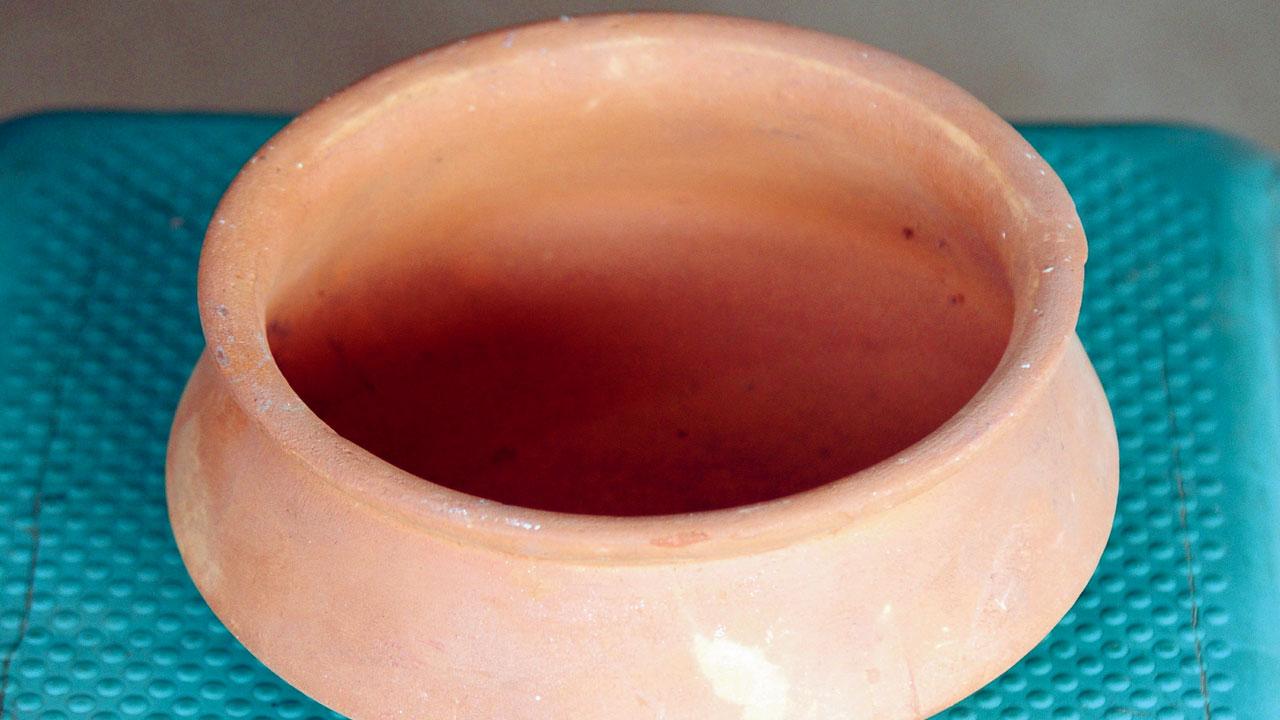
Biryani Handi
This isn’t necessarily a new trend, just a widely accepted one. Indian fast food chain Shiv Sagar has since long served firni, dahi matka and rabdi in small clay pots and trays from Dharavi. “We have a vendor Nathalal Chauhan who supplies the pots to us in bulk. During the lockdown, more often than not, we didn’t get supplies, resulting in a temporary change in the presentation. Thankfully, we are back to serving in clay vessels. It gives the customer the feeling of home and a comfort that we wish to provide them with,” shares Nikita Poojari, Director, Shiv Sagar Group. Rajkumar Gupta runs a shop in Andheri East, supplying kulhad to five-star hotels in the city. His workshop in Virar is where the vessels are hand-made to be sold by the kilo.

Nitin Saluja and Nikita Poojari
Gupta says that the clay he sources from UP soaks less oil while the Kolkata clay is soft and delicate. That from Rajkot is coarse but of high quality, and if done locally, it’s usually from Kalyan and Virar. But this comes with adulteration and needs thorough cleaning before use. The price varies according to the make and finish. The regular kulhads are picked up by local chaiwalas and smaller restaurants, but five star kitchens approach Gupta with specific shape and finesse requirements.
 Subscribe today by clicking the link and stay updated with the latest news!" Click here!
Subscribe today by clicking the link and stay updated with the latest news!" Click here!







